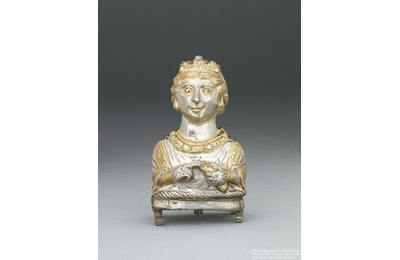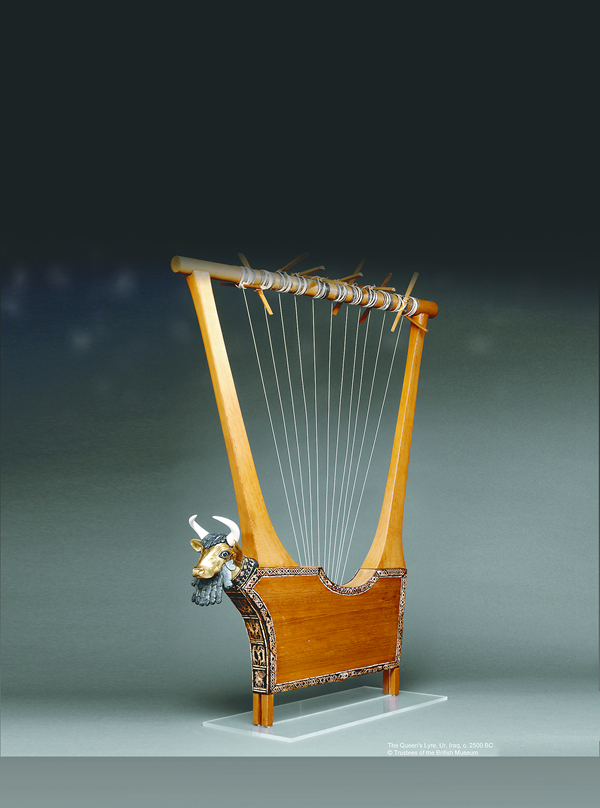
Queen's Harp
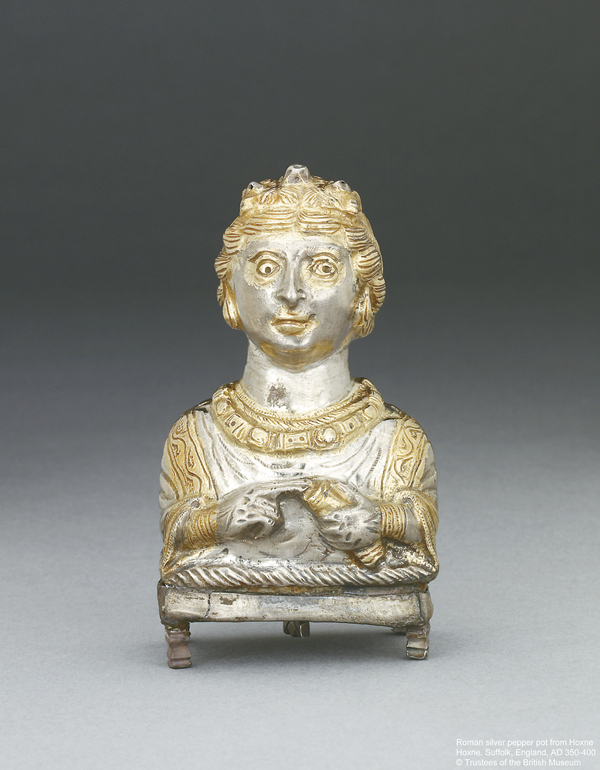
Hoxne Tiny Pepper Pot
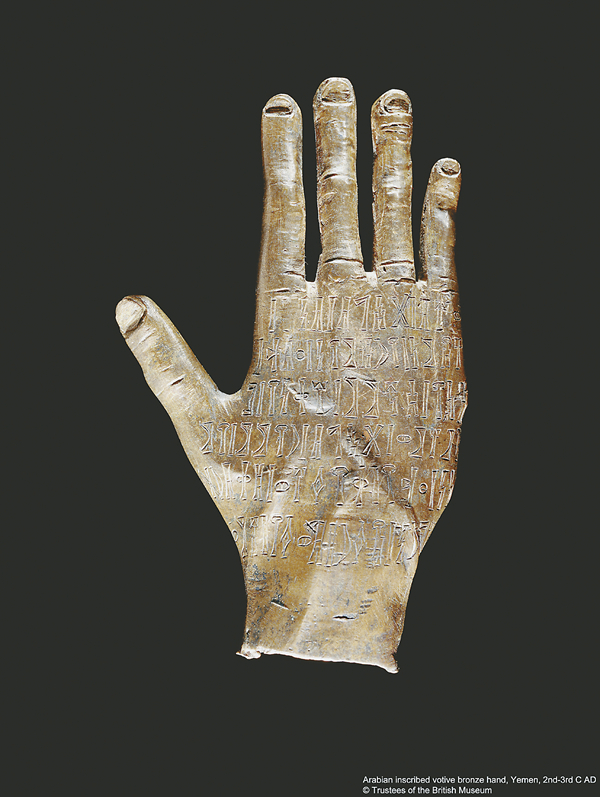
Wahab Ta'lab's Bronze Hand
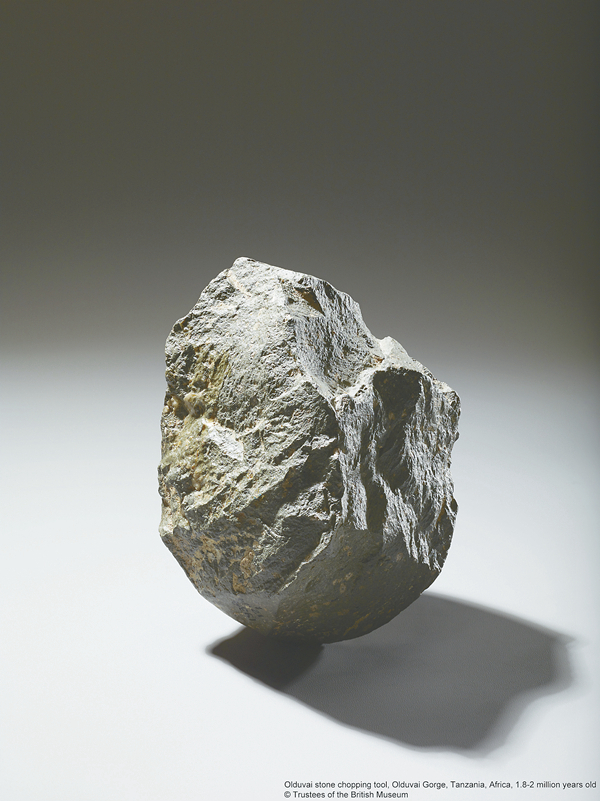
Olduvai Stone Chopping Tool
Ranging from the Stone Chopping Tool of Paleolithic Age found in Olduvai George to the contemporary artificial manufactures such as solar lamps made in China in the 21st century, the exhibition titled“A History of the World in 100 Objects”was held at National Museum of China
(NMC) from March 2 till May 31 in narration of the two million years' progress of human civilization.
This exhibition consisted of 100 selected items (sets) of exhibition out of over eight million pieces in the British Museum's collection across the two million years in time and five continents in space. In eight parts, namely "Beginnings", "The First Cities", "Power and Philosophy", "Ritual and Belief", "Trading and Invading", "Innovation and Adaptation", "Encounters and Connections" and "The World of Our Making", this exhibition provided a vivid showcase of the development course of the world civilizations. "With novel concept in curatorship, this exhibition will enable audiences to realize the close relationship between various civilizations as seen in objects, to sense the importance of dialogue and mutual respect between civilizations, and feel the integration and mutual influence between them as well." Huang Zhenchun, vice president of NMC said.
As to the choice criterion of 100 objects in such an encyclopedia collection of the British Museum, Hartwig Fischer, president of the British Museum, explained, "Though some exquisite exhibits that reflect human technology and aesthetic potential do exist, we prefer to highlight those objects of simple countenance and abundant contents, as a tiny stone seal can bring an extinct civilization back to life and those porcelain fragments abandoned randomly along the African coast can demonstrate the amazing journey by early merchants across the Indian Ocean. All those objects are pieced together to jointly narrate a global story of all the continents in millions of years' time".
Different from the familiar narration mode of the world history, this exhibition, rather than showcasing the differences between civilizations or the unique features of a certain civilization, highlighted the common features through two threads of clues as well as the integration and mutual influence between civilizations. The only exhibit in the preface of this exhibition, inner coffin of Shepenmehyt, a woman aristocrat of Ancient Egypt, just indicated such integration and influence. Discoveries indicate that all its materials came from regions outside Egypt: the wood from Lebanon, the gold from Kush, lapis lazuli from Afghanistan and bitumen from Mesopotamia. "This ordinary wooden coffin tries to tell to the audiences that in the Early Civilization age the worldwide exchange and cooperation was already common." Belinda Crerar, the British curator explained. First of all, the communications and sharing of sources, technology, thinking and cultures have created the human civilization, and this unceasing exchange and integration have constantly built up the track of civilizations. Secondly, different civilizations, despite their varied outlooks, share the identical concern for solving similar problems. Therefore the differences between civilizations provide an opportunity for reciprocal reference rather than reasons for conflict.
In this exhibition, eight Chinese objects such as jade Cong in Liangzhu Culture, bronze ritual vessel Gui in Western Zhou Dynasty, bronze bell between 600-400 B.C., lead-glazed earthenware Model of Liubo Players, Tang tomb figure in Tang Dynasty, blue-and-white porcelain plate and amphora in Yuan Dynasty, and solar lighting and charger made in Shenzhen in 2010 were on display. In the meanwhile, as a general practice of this global tour, a selected piece of objects from the local museum can be exhibited as No.101, together with those 100 objects from the British Museum. From NMC, the set of "Wooden Hammer and Pen used at China's Re-accession into WTO" became the No.101. "WTO is an international organization committed to economic globalization. As the founding country of GATT, the former WTO, China eventually returned to WTO in 2011 after 15 years of painstaking negotiations , which bears a crucial significance for China’s reform and opening up as well as the global economic integration." Yan Zhi, Chinese curator of this exhibition explained.
